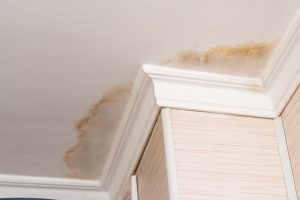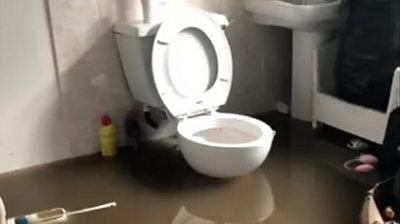We have noticed this great article about How to Repair and Prevent Bathroom Water Damage? directly below on the net and decided it made good sense to relate it with you on my blog.

Water damage often occurs in the bathroom due to the water made use of day-to-day. In some cases, the damages could be a little mold from the shower. Various other times, it's huge damages on your floor. Whatever it is, it is constantly excellent to understand the reason and stop it before it occurs.
This overview will experience a few of the typical causes of water damage in the washroom. We will additionally examine what you can do to avoid these reasons from damaging your shower room. Allow's dive in.
5 Typical Sources Of Water Damage in Bathrooms
These are the typical factors you would have water damage in your shower rooms and also how you can identify them:
Ruptured or Leaking Pipes
There are several pipes bring water to various parts of your washroom. Some pipes take water to the bathroom, the sink, the faucets, the shower, and numerous various other areas. They crisscross the small area of the shower room.
Occasionally, these pipes can get rustic as well as ruptured. Various other times, human action could trigger them to leakage. When this takes place, you'll locate water in the corners of your shower room or on the wall surface.
To detect this, look out for bubbling wall surfaces, mold and mildews, or mold. Call a specialist emergency plumbing to fix this when it occurs.
Fractures in your wall surface floor tilesv
Bathroom wall tiles have been specifically created for that function. They secure the wall surface from dampness from individuals taking showers. Nevertheless, they are not undestroyable.
Occasionally, your washroom wall surface floor tiles split and also allow some moisture to seep into the wall. This could potentially destroy the wall if you don't take any activity. If you notice a crack on your wall surface floor tiles, repair it quickly. Do not wait till it damages your wall surface.
Overruning bathrooms as well as sinks
As people, in some cases we make errors that might cause some water damage in the washroom. As an example, leaving your sink faucet on might trigger overflowing and damages to various other parts of the washroom with wetness.
Likewise, a defective toilet could create overruning. For instance, a damaged bathroom handle or other parts of the tank. When this occurs, it might damage the flooring.
As quickly as you observe an overflowing sink or toilet, call a plumber to help manage it promptly.
Roofing system Leaks
Occasionally, the trouble of water damage to the restroom might not originate from the shower room. For instance, a roof leakage might cause damages to the shower room ceiling. You can spot the damages done by checking out the water discolorations on the ceiling.
If you discover water stains on your ceiling, examine the roofing system to see if it's damaged. After that, call a professional to aid fix the issue.
Excess Dampness
It's amazing to have that long shower and also sprinkle water while you hem and haw as well as act like you're doing, however in some cases these acts can trigger water damage to your washroom.
Sprinkling water around can cause water to head to edges as well as create molds. See exactly how you spread out excess wetness around, and when you do it, clean it up to avoid damage.
Final thought
Water damage to your bathroom can be frustrating. However, you can manage it if you prevent several of the causes pointed out in this guide. Call an expert emergency situation plumbing technician if you see any type of extreme damage.
How to Prevent Water Damage in Your Bathroom?
Water damage repair is an expensive, meticulous, and lengthy process. Unfortunately, bathrooms are the most susceptible rooms to water damage due to toilets, showers, and sinks. Pipes and fixtures wear out over time and are not immune to damage. But all is not lost, as there are ways to prevent water damage from occurring in your bathroom.
Check Your Plumbing
Nothing lasts forever, especially pipes, which can rust and begin leaking over time. You should periodically conduct pipe inspections and pay attention for any musty smells or water stains that may indicate you need water damage repair. Here are some things to check:
- Frequently test valves for your toilet, shower, and sink to ensure they are properly working.
- Check faucet supply lines hidden under vanities and replace when needed.
- Replace cracked or deteriorating caulking along sinks, tubs, and showers.
- If you notice a clog in your sink, call in a professional.
- Since you can’t check the pipes in the wall, keep an eye out for stains, drywall bubbling, musty smells, and excess moisture; if the bathroom is on a second level, check the ceiling of the room directly below for these signs.
Don’t Overwork Your Toilet
One of the most common reasons bathrooms need water damage repair is due to overflowing toilets. Save yourself the hassle of cleanup by being mindful and not pushing your toilet to extreme limits. If you have young children, it is especially important to keep an eye on them when they are in the bathroom and to teach them how to avoid clogging the toilet. Here are some more tips to help prevent your toilet from overflowing:
- If you have a septic tank, only use septic-safe toilet paper
- Do not flush anything down the toilet besides toilet paper; items like diapers and sanitary napkins will clog the piping
- Pay attention to your toilet’s water level: If it’s low, it could mean it is partially clogged or that there is a crack in the toilet bowl
https://www.alure.com/home-improvements-blog/resources/how-to-prevent-water-damage-in-your-bathroom

We had been brought to that article on How to Repair and Prevent Bathroom Water Damage? from an acquaintance on another site. Do you know someone else who is serious about How to Repair and Prevent Bathroom Water Damage?? Feel free to promote it. Thanks so much for going through it.
Schedule Service Now
Comments on “Bathroom Leakages as well as Just How to Take Care of Them”